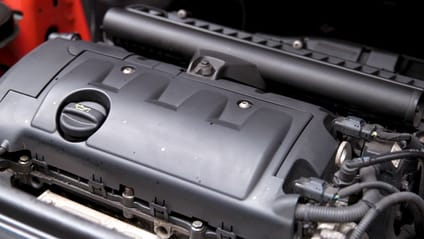
10 engine maintenance tips you can do yourself from Amy Shore
If you want to keep your car’s engine running like new, but aren’t exactly Mechanic of the Year, Jaguar restoration whizz Amy is here to help.


Engines are complex beasts. So complex in fact that sometimes we assume there’s little we can do beyond keeping the oil topped up and resisting the urge to rev it to high hell. The truth is, leaving it to the annual service and hoping everything will be alright can seem like a much more attractive option.
But being a little more proactive in your day-to-day engine maintenance – and keeping an eye and ear out for any potential gremlins – could save you a bucketload of bellyaches in the future. From coolants and air filters to showing your vehicle a little bit of love with the new and improved Shell V-Power, here are 10 tips from Jaguar restoration workshop co-owner Amy Shore that will give you a healthier engine in no time.
Advertisement - Page continues below1. Don’t ignore the warning light

It might sound obvious, but if your engine warning light comes on, you have a problem that needs resolving immediately. Even if it’s a relatively minor issue, don’t be tempted to make it tomorrow’s problem, as it will soon become today’s…
2. Take it steady

You don’t necessarily have to drive slower, but practicing smoother braking and accelerating could mean less time spent at the higher end of the rev counter. Honestly, your engine will thank you for it.
Advertisement - Page continues below3. Don’t run the tank all the way down

Sediments from fuel form at the bottom of the tank over time, which can enter the fuel system and the engine, causing poor running and lasting damage. So next time you’re into the last quarter on the fuel gauge, take your pride and joy for a top up at the garage.
4. Fuel up with the best

While you’re there, why not give your engine the treat it deserves? New and improved Shell V-Power now up to 100% cleans critical engine parts to fully rejuvenate your engine’s performance, keeping your engine running like new*. My husband and I use it for every car we drive, from the classics in our garage to our everyday run-arounds, and it makes such a difference
5. Check your oil levels

It sounds obvious, but many engine problems are simply down to running on low or no oil. Check the oil level on the dipstick or the onboard car computer. If your engine is below the minimum mark, top up the oil with the recommend specification as soon as possible.
6. Keep an eye on your coolant

Always keep the coolant expansion tank topped up to the correct level with the coolant that’s best for your car. Be careful if you are diluting the coolant, as impurities in tap water can cause deposits to form. This can block the engine internals, making it run inefficiently.
Advertisement - Page continues below7. Excessive exhaust smoke?

If you’re getting thick, white exhaust smoke, you may have a potential head gasket failure and your engine could overheat, with potentially serious consequences. When this happens, it’s time to take it to the garage.
8. Clogged up air filter

A bunged-up air filter could reduce engine power and lead to decreased fuel efficiency, which is why I’d recommend getting it replaced every year or 12,000 miles, depending on the types of roads you drive on.
Advertisement - Page continues below9. Unwanted visitors

Animals love a warm place to shelter, especially if you keep your car outside and haven’t driven it in a while. Engine bays in particular make ideal winter nests for rodents, so if you haven’t driven your car for a while, lift up the bonnet and have a check.
10. Have a spring clean

While you’re under there, it's also a good idea to clear out any leaves and debris that may have accumulated during this period.
Discover how Shell V-Power can fuel your passions
Featured

Trending this week
- Car Review
BMW iX3




